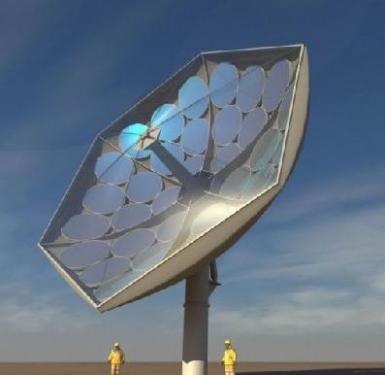Heating And Cooling Equipment Mould Mold In Air Conditioner,Mold On Air Conditioner,Air Conditioning Sheet Mould,Mold From Air Conditioner Kunshan Wangdaxin Precision Mould Co., Ltd. , https://www.wdxmould.com A few days ago, scientists took inspiration from sunflowers and developed a sunflower-shaped solar concentrator. They said that this kind of concentrator will revolutionize the solar energy field. The new solar concentrator uses several mirrors to focus sunlight onto the converter chip. Experts say that such solar concentrators can be used to provide electricity to remote areas.
A few days ago, scientists took inspiration from sunflowers and developed a sunflower-shaped solar concentrator. They said that this kind of concentrator will revolutionize the solar energy field. The new solar concentrator uses several mirrors to focus sunlight onto the converter chip. Experts say that such solar concentrators can be used to provide electricity to remote areas.
Scientists hope the plan will develop an affordable photovoltaic system that will collect 80% of sunlight and convert it to electricity. This system can be built in any area that lacks sustainable energy, potable water, and cold air at a cost that is only one-third that of similar systems. The prototype of this system uses a large parabolic reflector, consisting of several small mirrors. They are connected to a tracking system. The tracking system determines the ideal angle based on the position of the sun.
A parabolic reflector reflects sunlight to a number of microchannel liquid-cooled receivers equipped with optoelectronic chips. Each chip has a size of 1 x 1 cm and can produce an average of 200 to 250 watts of electricity per 8 hours of sunshine per day. According to this week's news, the Swiss Commission for Technology and Innovation awarded a three-year, $2.4 million research grant to IBM Research, solar technology provider Airlight Energy, the Swiss Federal Institute of Technology Zurich, and the Kur University of Technology Applied Economics Scientists at the Interstate Institute of Technology in Brooks. They will be responsible for the research and development of this project. This project is called the Economic Concentrator Solar Photovoltaic Power Generation and Photothermal System (hereinafter referred to as HCPVT).
The entire receiver of the HCPVT system has hundreds of optoelectronic chips and can provide 25 kilowatts of power. The optoelectronic chip is mounted on the micro-structured layer. The micro-structure layer is responsible for transporting the liquid coolant to only a few tens of microns away from the chip. The role of the coolant is to absorb heat and the efficiency is 10 times that of current systems. Bruno Mitchell of IBM Research said: "We plan to use three-junction photovoltaic cells on the microchannel cooling module, which can directly convert more than 30% of the collected sunlight into electricity, while allowing the heat recovery efficiency to reach over 50%."
Mitchell said: "We think we can achieve this through a very practical design. The design we propose uses an innovative concrete tracker, and the main optical system consists of inexpensive inflatable mirrors and concrete structures. This is a very simple one. The innovation was based on decades of experience in lightweight and high-strength concrete materials used to build bridges.†Andrea Pedretti, chief technology officer of AirlightEnergy pointed out: “The design of the entire system is very simple. We replace expensive steel and glass with inexpensive concrete and simple pressurized metal foil."
According to scientists, the HCPVT system can provide sustainable energy and fresh water for many regions around the world, including southern Europe, Africa, the Arabian Peninsula, southwestern North America, South America, and Australia. In addition, this system can also promote tourism development, especially for some island resorts such as Maldives, Seychelles and Mauritius. Compared with this kind of system, the traditional system needs to assemble the components together, which is inefficient and costly. At present, an HCPVT prototype is being tested at the IBM Institute in Zurich. As part of this collaborative research program, several other prototypes will be manufactured in Biasca and Lüschlikon, Switzerland.